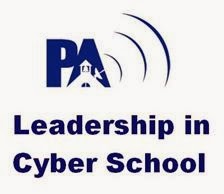How do you change education in an environment
with so many entrenched organizations, like unions, school boards, and vested
interests?
Schools are educational institutions that
validate and reinforce parenting. As a parent and grandparent myself, I want to
validate their efforts because it reflects on my own parenting skills. This
provides a motivation to look the other way even if our school deserves some
questioning. The school system that is meant to bring about security and
stability can produce apathetic and bureaucratic stagnation.
Unions want stability because it is what their membership wants. Change is
something that organized labor is not quick to respond to. They can handle
change, but incrementally, and over a long period of time. Unions take the
lowest common denominator in schools and lay a working standard to protect
their employees. Unions do what the NCLB does for students. They pull all low
performers up because no teacher should be left behind. The goal of pulling low
performers up differs from a goal to maximally advance student achievement.
Unfortunately, some of the brightest students and teachers are left behind in
bureaucratic molasses.
School boards want fiscal constraint. They want educated children in exchange for tax dollars from their constituents. School boards can make decisions that produce short term results to please their constituents. The real goal beneath fiscal accountability is self preservation. School boards can cut short solutions without sustainable answers. There are bills pending that could hurt cyber schools in Pennsylvania. School boards across the Commonwealth seem to be very interested in sacrificing innovation for budget cuts. Online education is in a growth trend right now. They may regret these cuts when the long term results will be less effective tools developed for on line learning.
There are vested interest that would like to keep the educational institution the same. Sometimes a school district may be the largest employer and service provider in a community. Book publishing companies, building contractors, architects, and maintenance companies shudder to understand how they will be able to bill school districts when they build fewer buildings because education is being shifted to the home and away from text books. Some of these people are sitting on our school boards today. Bus companies wonder how they will transport students from their home to their dining room. Fortunately for them, we will never eliminate face to face education. Blended programs are the wave of the future which will combine online learning at home with part time interaction at a facility. This part time strategy is likely to lead to less demand for text books, facilities and transportation services.
Charter schools are schools of choice. The parent chooses a charter school, and in turn rejects a compulsory option. The fear that lulls parents into an apathetic bliss of optimism can also empower them when options are presented to them. Traditional schools resist change. Advances in technology have leveled the playing field. (Or should we say playground.) In order for our children to compete we must change the way we teach, and the way that students learn. Schools resist change because it means more work and rethinking the systems that have worked for them in the past. Parents are the hope and future of education. They are the rogue element that trumps the schools with the oldest institution of them all, the family. For this reason we should be promoting cyber charter schools to finish what they started. To pull the plug after a short term gain will only mean a long term delay on our competition in the global educational race.
Parental choice is the rogue element in education that can bring change.
Finland has been successful in tapping this resource in a directive way by
creating a national visioning exercise. The movement of education from the
classroom to the home may be a key ingredient in American education reform. The
American education system started in the home. Computers can empower parent
facilitators to deliver interaction with professional educators online. A
blended model that is part time traditional school and part time home school
will bring about the kind of reform to makes sense of global competition and
professional development.
If this short essay made an impression on you, then please consider writing your state representative at this link. http://savemycharterschool.com/




 Dr.
James Hanak, CEO
Dr.
James Hanak, CEO